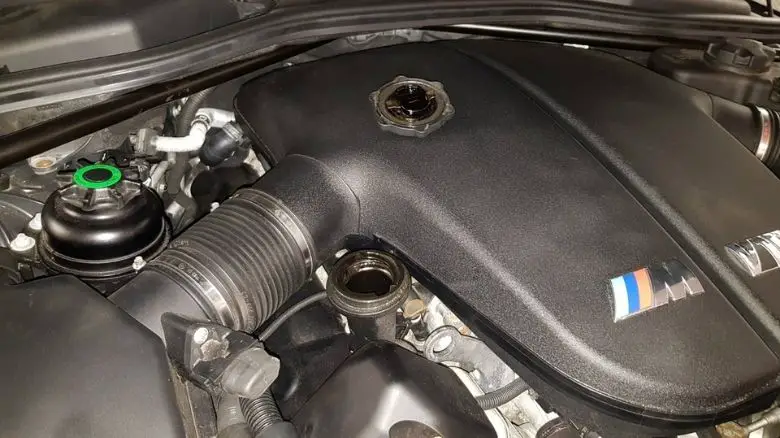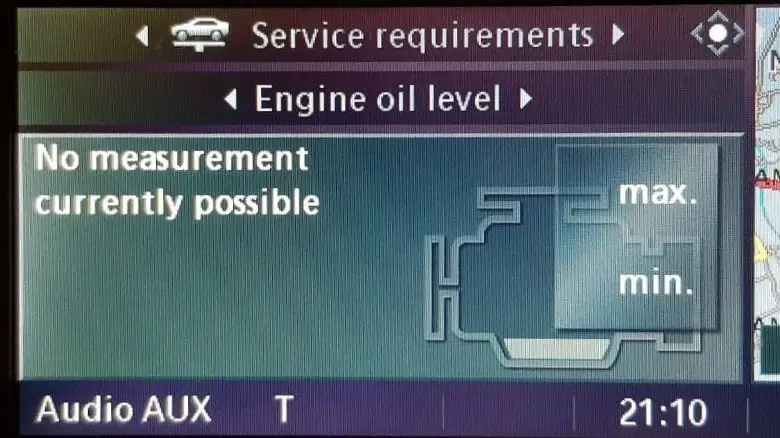Do BMWs Have Dipsticks? (And How Do You Check Oil Without One?)
Table of Contents
Oil dipsticks have long been a feature of automobiles around the world. They’re easy to use, efficient and give a quick answer to the question of whether your engine needs oil.
However, confusion has arisen as some BMW drivers have been surprised to find that their car doesn’t have a physical dipstick.
So what’s happening here? Do BMWs have dipsticks?
BMW models built since 2006 do not have dipsticks. They were replaced with an electronic oil level indicator located in the oil pan thanks to owners’ infrequent use of the physical dipstick.
Despite this, modern 7 and 8 Series BMWs fitted with V8 and V12 engines have seen the return of the physical dipstick alongside the electronic system.
But what was behind BMW’s decision to remove dipsticks, and how do you check the oil level in a BMW without one?
Why did BMW stop using dipsticks?
Market research suggested that BMW drivers rarely used their dipsticks, so the company switched to using electronic sensors instead.
The majority of owners simply relied on the car’s warning system to tell them when they needed more oil, which definitely isn’t advisable, particularly in a BMW.
However, many commentators have suggested that this move was needlessly adding technology where it wasn’t necessary in an attempt to make drivers’ lives simpler.

Ditching one of the most fundamental aspects of car maintenance – checking your own oil level – removes some of the connection drivers feel with their car, particularly those who have a passion for all things mechanical.
But younger generations of motorists simply don’t have the same affinity with getting their hands dirty that previous generations did, so BMW adapted.
Problems caused by BMWs not having dipsticks
Many BMW enthusiasts have suggested that the replacement of the physical dipstick with an electronic sensor in the oil pan has caused more problems than it’s solved.
Relying on any electronic gadget to give you a readout of something as vital as the car’s oil level has many people nervous, and with good reason. If the sensors failed and you drove your car without enough oil, it could be catastrophic for the engine.
Despite BMW building in multiple redundancies to their oil level systems, there’s nothing quite like the peace of mind of being able to physically check the oil level in your car and make sure everything is okay.
Another issue is the potential to overfill the oil, particularly after an oil change. In this scenario it can be a number of miles before the electronic gauge reads correctly, and as such there is the potential for the car to ask for more oil when it doesn’t really need it.
We’ve first hand experience with this here at The Car Investor. Our BMW 2007 M5 was recently in for an oil change, and it took over 100 miles to fully calibrate afterwards.
During those 100 miles we were on high alert thanks to the oil warnings that were continually appearing, despite being reassured by our local BMW specialist that everything was fine.
And thankfully we didn’t top it up because when it finally calibrated, the oil level shot back up to near the maximum marker.
We can understand why so many BMW owners prefer the old-fashioned dipsticks in this sort of scenario!
How do you check the oil level in a BMW?
If you own a pre-2006 BMW you will have a dipstick, and you can follow these simple instructions to check the oil level:
- Pull out the dipstick
- Wipe it clean with a cloth
- Reinsert the dipstick and pull it out again
- Check the oil level against the minimum and maximum markings on the dipstick
- If the oil level is below the minimum mark, top it up using the appropriate oil
- If the oil level is above the maximum mark, you should drain some of the oil
However, if your BMW doesn’t have a dipstick the process is a little different to what you might be used to.
How do you check the oil on a BMW without a dipstick?
You must use the BMW’s onboard computer system to check how much oil you have.
Here’s how to do it if your car has BMW’s iDrive system (although this may vary slightly depending on which iDrive version your car is running):
- Start the car to warm up the engine and get the oil circulating
- Navigate to ‘Info’ and then ‘Service’ on the iDrive onboard computer
- Some iDrive versions have an additional step – to select ‘Vehicle Status’
- Then choose ‘Engine oil level’ – this shows how much oil is in the system, and the min/max lines that you would see on a traditional dipstick
Here’s how to check your oil level if you don’t have iDrive or a dipstick:
- Start the car to warm up the engine and get the oil circulating
- Scroll through the menu using the toggle on the control stalk until you get to ‘Oil’
- Press the ‘BC’ button
- A graphic will be displayed showing the min/max indicators and how much oil you have
It’s worth noting that if you’re starting your car from cold then it can take a while to get up to operating temperature. It can be best to check your BMW’s oil after a drive rather than before.

It’s also worth mentioning that some BMWs with iDrive also offer the ability to check the oil level on the dashboard, by cycling through the menus using the control stalk.
Final thoughts
BMW decided that it was more important to focus on developing electronic systems to measure oil levels for driver convenience, despite many owners feeling that this is a hugely over-engineered solution to a problem that didn’t really exist in the first place.
And while we understand these reasons, it doesn’t stop us thinking that having the option to check the oil level using a dipstick would be a nice addition to the car, alongside the electronic gauge.
And with the reintroduction of dipsticks in a handful of BMW models, it makes us hopeful that this might become a more common feature over the coming years… that’s if electric cars don’t cause the death of the dipstick first, of course!
ABOUT THE AUTHOR
Adam Chinn writes about the intersecting worlds of classic cars, driving pleasure, and smart investment strategies. Starting his journey at 26, he’s proven that one doesn’t need to be wealthy to begin investing in classic cars.
Adam’s insights have been recognized on platforms such as MoneyInc, Swagger Magazine, and Top Speed.




1 thought on “Do BMWs Have Dipsticks? (And How Do You Check Oil Without One?)”
If I had looked more closely and noticed my 2009 BMW M3 did not have a dip stick I probably might have reconsidered its purchase. Something so simple being omitted by electronic monitoring just doesn’t make sense. In defense though I have had no issues with it not being there but topping off after several thousand miles of driving if necessary isn’t possible. In 5,000 miles of driving I have yet to get a message that a liter of oil was necessary which is pretty hard to imagine since the LS V8 in my less mileage 01 Corvette requires a quart every 1,500 miles of driving. Moral of the non dipstick is just use top grade oil recommended for your car and perform oil changes between 5 to 7K miles and you probably will never have an oil level problem .